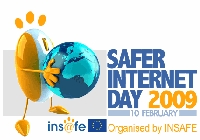Study: Largest global corporates get over 10 million mentions a month; Twitter rocks, YouTube grows massively
Companies in the Fortune Global 100 get a total of 10,400,132 online mentions in a month. Twitter is the catalyst for them as it generates the majority of these mentions. However, YouTube is the rising star this year. This is the main findings of the third annual Burson-Marsteller Global Social Media Check-Up, which also includes new data provided by Visible Technologies.
The study states that the majority of the big corporates (87%) are using at least one of the major social platforms. The main growth can be seen at YouTube with 79% of companies now using a branded YouTube channel (57% in 2011). The average performance figures showed more than two million views and 1,669 subscribers. The development is illustrating the importance of integrating original multimedia content that can be shared on the social networks.
Twitter is still the rock-star among the popular social networks in terms of corporate usage. 82% of Fortune Global 100 companies have at least one Twitter account with an average mention of 55,970 times on the 140 character platform. The importance of Twitter ca be seen in the fact that stakeholders are following global companies closely.
Compared to 2011, the average number of followers per corporate Twitter account almost tripled to 14,709 from 5,076. On Facebook, the average number of likes per company page has increased by 275% in two years to 152,646 likes this year.
“People want to interact and connect with these major companies, and these platforms are the bridge directly to the heart of these organizations. What’s even more impressive is how much companies are engaging back with followers. Seventy-nine percent of corporate accounts attempt to engage on Twitter with retweets and @-mentions, and 70 percent of corporate Facebook pages are responding to comments on their walls and timelines.”
Burson-Marsteller, Chief Global Digital Strategist, Dallas Lawrence
Some more findings of the study…
– Fortune Global 100 companies have an average of accounts of: 10.4 Facebook pages, 10.1 Twitter accounts, 8.1 YouTube channels, 2.6 Google Plus pages and 2.0 Pinterest accounts.
– 74% of companies have a Facebook page
– 93% of corporate Facebook get weekly updates
– 48% have joined Google Plus
– 25% are on Pinterest
And whatever else you might want to know about the Top Global 100 you can find here, or within their infographic….




